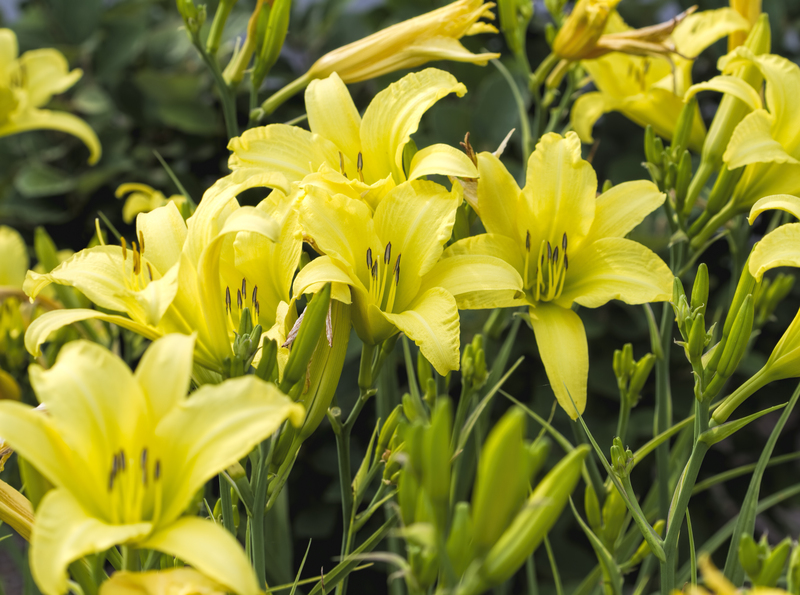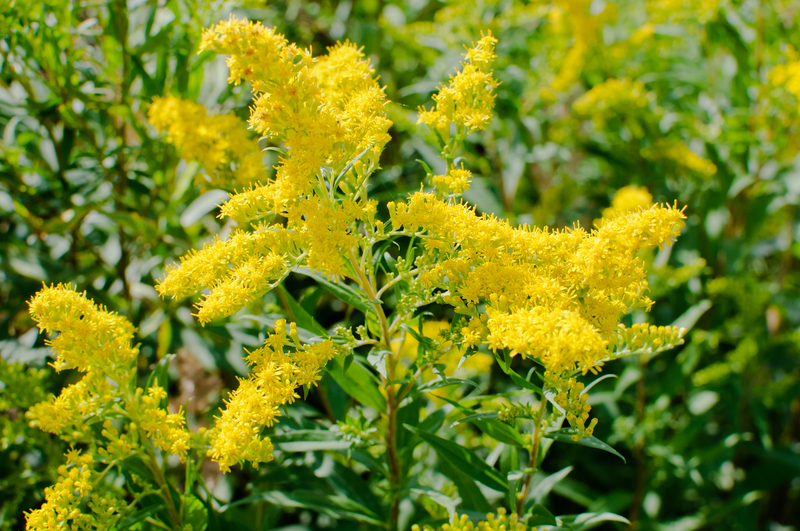Discover the Secrets to a Thriving Herb Garden
Posted on 16/09/2025
Discover the Secrets to a Thriving Herb Garden
If you have ever dreamed of plucking fresh herbs right from your backyard or windowsill, you are not alone. Herb gardening is an enjoyable, therapeutic, and highly rewarding hobby that anyone can master. From fragrant basil to soothing chamomile, herbs offer incredible culinary, medicinal, and aromatic benefits. But what does it take to cultivate a lush, healthy herb garden? In this comprehensive guide, you'll uncover the secrets to creating a flourishing space that yields bountiful, vibrant herbs all year round.
Why Start an Herb Garden?
Growing your own herb garden is not only cost-effective but also gives you access to the freshest, most aromatic herbs possible. Here's why gardening enthusiasts everywhere are embracing herbs:
- Flavor Enhancement: Freshly harvested herbs add an unmatched zest to dishes.
- Health Benefits: Many herbs possess medicinal properties supporting health and wellness.
- Accessibility: Herbs thrive in small spaces, making them perfect for homes, apartments, and small gardens.
- Low Maintenance: Most herbs are resilient and easy to care for, suiting both beginners and experts.
- Eco-Friendly: Reduces supermarket packaging and lowers your carbon footprint.

Choosing the Perfect Location for Your Herb Garden
To unlock the secrets of a thriving herb garden, it all starts with the right location. Herbs require specific conditions to reach their full potential. Let's explore the best options for different spaces:
Outdoor Herb Gardens
- Sunlight: Most herbs need at least 6-8 hours of direct sun daily. Observe your space to select the sunniest spot.
- Soil Quality: Choose well-draining soil rich in organic matter. Raised beds or garden plots work well.
- Protection: Herbs dislike excessive wind or heavy rain. Consider natural windbreaks or shade cloth for protection.
Indoor Herb Gardens
- Windowsills: South or southwest-facing windows offer ample sunlight.
- Artificial Lighting: If natural light is lacking, use grow lights to supplement daylight hours.
- Containers: Choose pots with drainage holes to avoid overwatering roots.
Pro Tip: Move pots as needed to chase sunlight throughout the year!
Selecting the Best Herbs to Grow
The key to a successful herb garden is choosing the right plants for your climate, preferences, and needs. Here are some popular herbs that every gardener should consider:
- Basil: Ideal for summer dishes, pairs well with tomatoes and pasta.
- Mint: Refreshing in teas, desserts, and savory dishes (plant in pots to contain roots).
- Rosemary: Robust, drought-resistant, and aromatic for roasted meals.
- Thyme: Hardy and versatile, ideal for stews and grilled vegetables.
- Parsley: Nutrient-rich, suitable as a garnish or salad base.
- Cilantro (Coriander): Essential in salsas, curries, and fresh salads.
- Chives: Mild onion flavor, excellent in salads and dips.
- Oregano: Classic for Italian cuisine, easy to grow and propagate.
- Dill: Perfect for pickling, salads, and seafood.
- Sage: Robust and earthy, wonderful for savory roasts.
Tip: Start with 4-6 varieties to avoid overcrowding and ensure each plant receives adequate sunlight and airflow.
Understanding Soil and Fertilizer Needs
Soil Quality: The Foundation of Healthy Herbs
A thriving herb garden begins with proper soil. Most common herbs prefer slightly alkaline, well-drained soil. Here's how to prepare the perfect foundation:
- Test Your Soil: Use a soil test kit to check pH (optimal level is 6.0 to 7.5).
- Amend as Needed: Mix in compost or well-rotted manure to boost nutrients and structure.
- Drainage Matters: Sandy loam is ideal; if soil is heavy, add coarse sand or perlite to improve aeration.
The Role of Fertilizer
While herbs typically require less fertilizer than vegetables, occasional feeding can enhance growth and flavor:
- Organic Options: Fish emulsion, seaweed extract, or compost tea provide gentle nourishment.
- Avoid Over-Fertilizing: Too many nutrients can dilute essential oils, reducing flavor intensity.
Pro Secret: Apply a balanced, slow-release fertilizer in early spring, then supplement lightly through the growing season.
Watering Techniques for Lush Herbs
Watering is a delicate balance in successful herb gardening. Here's how to get it just right:
- Check Soil Moisture: Stick your finger about an inch deep; if dry, it's time to water.
- Water Early: Morning watering allows foliage to dry, reducing disease risk.
- Consistency: Herbs in pots may need more frequent watering, especially during hot weather.
- Avoid Overwatering: Allow soil to dry out slightly between waterings to prevent root rot.
- Mulch: Add a layer of straw or bark to help retain moisture in outdoor beds.
Secrets to Pruning and Harvesting Your Herbs
Pruning for Healthier Growth
Regular pruning is one of the secrets to a productive herb garden. Here's why and how:
- Encourages Bushiness: Pinch off the tops to promote side growth and fuller plants.
- Removes Old Growth: Eliminate any yellowing, woody, or dead stems for continued vigor.
- Continuous Harvest: Never remove more than one-third of the plant at a time.
Best Harvesting Practices
- Time it Right: Harvest in the morning after dew has dried but before the sun is hottest.
- Use Clean Tools: Sharp scissors or pruners prevent plant damage and reduce disease spread.
- Frequent Picking: Regular harvesting encourages more leaf production.
Pest and Disease Management
A vibrant herb garden attracts some pests, but you can protect your plants by following these proactive strategies:
Natural Pest Control Tips
- Encourage Beneficial Insects: Ladybugs and praying mantises help control aphids and other pests naturally.
- Neem Oil & Soap Sprays: These organic solutions are safe for edible herbs and deter common insects.
- Companion Planting: Mix strong-scented herbs (such as basil, mint, and garlic) to repel pests naturally.
Preventing and Treating Diseases
- Spacing: Proper spacing allows air to circulate, reducing mold and mildew risks.
- Avoid Wet Leaves: Water soil directly, not leaves, to limit fungal diseases.
- Remove Affected Plants: If you spot disease, immediately remove infected leaves or plants.
Insider Secret: Healthy soil leads to healthy plants, which are less susceptible to pests and diseases!
Growing Herbs Year-Round
With proper care, you can enjoy a herb garden in every season. Here's how to keep your herbs productive through the year:
- Overwintering: Pot up tender herbs like basil and bring them indoors before frost.
- Cool-Weather Herbs: Parsley, chives, and cilantro thrive in fall and spring.
- Lighting: Supplemental grow lights can help when winter sunlight is limited.
- Rotation: Renew annual herb plantings for ongoing vitality.
Herb Garden Design Ideas
Beyond functionality, a well-designed herb garden is a delight for the senses. Consider these design secrets:
Classic Kitchen Gardens
- Raised Beds: Easy access, great drainage, and elegant organization of crops.
- Border Planting: Frame garden beds with chives, lavender, or thyme for beauty and pest resistance.
Container Herb Gardens
- Colorful Pots: Group different sized and colored containers for a charming display.
- Hanging Baskets: Ideal for trailing varieties like oregano and mint.
Vertical Gardens
- Wall Planters: Save space by growing herbs vertically on fences or walls.
- Pallet Gardens: Repurpose pallets for a rustic and creative herb haven.
Create an inviting garden that suits your lifestyle and space!
Secrets to Storing and Using Fresh Herbs
Once you've mastered growing a thriving herb garden, maximize your bounty with proper storage and creative uses:
- Refrigeration: Wrap soft herbs in a damp towel and store in a bag in the fridge.
- Freezing: Chop herbs and freeze in ice cube trays filled with water or oil for easy use in cooking.
- Drying: Hang bunches upside down in a cool, dry place; store in airtight containers after drying.
- Infusions: Create herbal oils, vinegars, teas, and pestos for flavor and preservation.
Get creative in the kitchen: Add fresh snippets to salads, soups, marinades, or use as aromatic garnishes!
Common Mistakes to Avoid in Herb Gardening
To truly unlock the secrets to a thriving herb garden, sidestep these common pitfalls:
- Overcrowding: Cramped plants compete for light, water, and nutrients.
- Neglecting Pruning: Causes legginess and reduced harvest.
- Poor Drainage: Roots sitting in water can rot quickly.
- Wrong Herbs for Climate: Choose varieties that match your local seasons and temperatures.
- Ignoring Pests: Left unchecked, insect infestations can destroy your hard work.

Expert Gardening Secrets: Bonus Tips
- Companion Planting: Pair herbs with vegetables and fruits for mutual benefits.
- Rotate Crops: Prevent nutrient depletion and disease cycles by changing plant placements yearly.
- Journal: Keep a garden record to remember what works (and what doesn't) for future seasons.
- Community: Join local gardening groups for expert advice and plant swaps.
Conclusion: Cultivating Your Secret Herb Paradise
Herb gardening is an accessible and immensely fulfilling pursuit, whether you have sprawling backyard beds or a few pots on your balcony. By embracing the secrets shared above - from soil preparation and correct watering to timely pruning and harvesting - you'll create a true herb haven that rewards all your senses and culinary adventures.
Remember, every thriving herb garden begins with observation, patience, and a willingness to learn. Start small, experiment with different herbs, and savor the joy of nurturing life from seed to harvest. Here's to cultivating fresh, aromatic herbs and unlocking the secret garden within your own home!
Ready to grow your own herb paradise? Start today and watch your garden - and your cooking - flourish!

